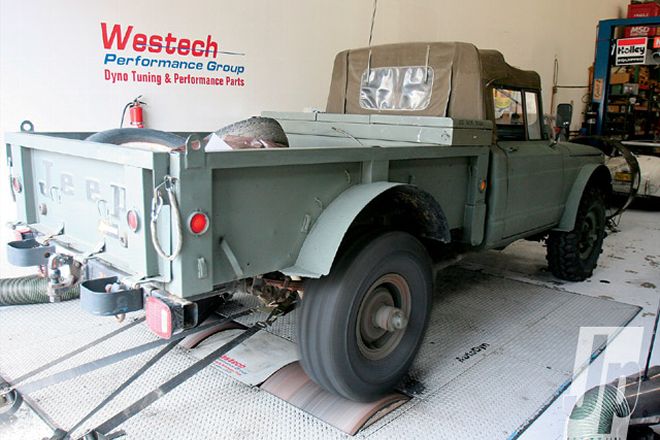
 Pete Trasborg
Brand Manager, Jp
Pete Trasborg
Brand Manager, Jp
With our M715 sucking down fuel at a rate of 4 mpg, we knew we had to do some-thing. We were running a Holley 670cfm Truck Avenger on our Chevy V-8, and thanks to an AEM wide-band O2 sensor, we knew we were running an air-to-fuel ratio of 10:1 all the time.
The issue was that while we knew how to tune the idle circuit (little screws in the side of the carburetor) we didn't know how to get better mileage out of the Jeep without possibly damaging the engine. Better mileage means to suck down less fuel, but running the engine too lean will lead to damage. The old rule of thumb is that 14.7 units of air to one unit of fuel is the ideal, or stoichiometric, mixture for a gas engine to run. As we all know, in the real world, the ideal rarely happens and close is often good enough.
Such is the case with carburetor tuning. While a fuel-injected engine can monitor the air-to-fuel ratio (A/F ratio) and almost instantly change it by adding or subtracting fuel, it takes a little longer for the guys still running carburetors to adjust. How quick can you pop the hood to change jetting?
We knew that using a wide-band O2 sensor was a good way to keep tabs on what the engine is doing but we didn't know that it was such a great carburetor-tuning tool. When we went and talked to the experts at Westech Performance for some tips, tricks, and pointers and found them using a wide-band O2 sensor in conjunction with a dyno we knew we were on the right course. We strapped the truck to a dyno for a full carburetor tuning session and learned that if you don't have a good shop you can get your own carburetor pretty close to a full-on shop tune with a wide-band O2 sensor, a vacuum gauge and a bit of patience.
Even though we are tuning a Holley carburetor here, many of the tips can apply to whatever carburetor you might have.
More Power and Mileage
Tuning a carburetor is all about compromises and often you will see maximum power at a lower than "ideal" A/F ratio. In our case, we made maximum power below that 13.6:1 and 12.5:1, but we still made 15hp over where we started and still doubled fuel economy for our 7,000 lb truck. We went for economy, dial your carburetor in as you see fit.



